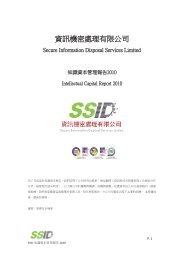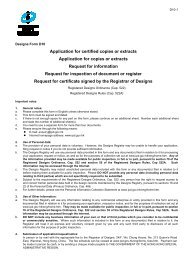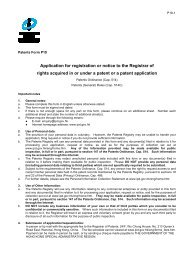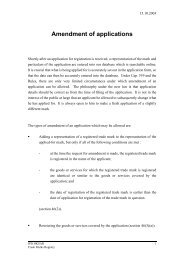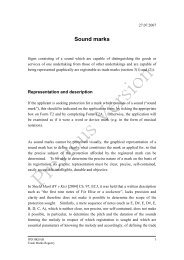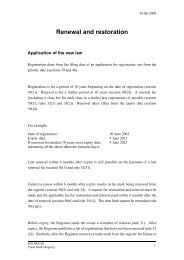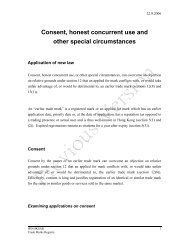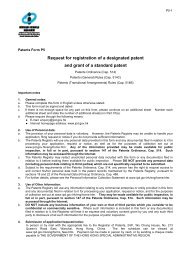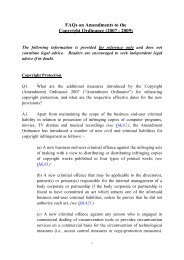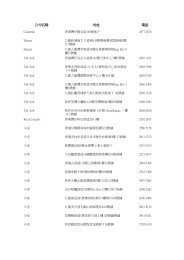Report
Report
Report
You also want an ePaper? Increase the reach of your titles
YUMPU automatically turns print PDFs into web optimized ePapers that Google loves.
- 14 -<br />
addition to generating IP, investment in R&D leads to an increase in the<br />
value-added, revenue and export value per employee. IP-intensive<br />
industries also create more jobs and higher annual average wage per<br />
worker compared to that of the non-IP-intensive industries. As an<br />
illustration, Singapore pursued an aggressive policy in terms of increasing<br />
R&D expenditure, progressive revamp of its patent system to become an<br />
OGP one (paragraph 3.18 below), etc., and showed a more rapid growth<br />
in Gross Domestic Product (GDP) than Hong Kong in the past decade or<br />
so.<br />
3.12 Patent protection is a key component of an IP system, as it<br />
provides incentives for private firms to carry out R&D which is financed<br />
through the market place rather than government funds. Countries with<br />
stronger patent rights tend to have greater export volume in<br />
patent-intensive sectors, 10 and stronger patent rights are associated with<br />
faster industrial and economic growth. 11 In a research regarding the<br />
10<br />
See Keith E Maskus and Lei Yang, “Patent Reforms and Export Specialization”, Research paper,<br />
University of Colorado at Boulder and Hong Kong Polytechnic University, 2011<br />
(web.lmdg.econ.au.dk/koldingfjord/maskus.pdf) –<br />
“We find that, conditional on factor endowments and intensities, a country with stronger PRs<br />
[patent rights] tend to have greater exports to the United States in patent-intensive sectors.” (p. 1,<br />
emphasis added).<br />
“The empirical results conform broadly with the underlying hypothesis that reforms in PRs can<br />
boost export performance in sectors that rely relatively more on patent protection. More<br />
generally, the extent of this impact differs across industries that vary in their technology content as<br />
measured by R&D as a percentage of sales. Moreover, we find that the effects of stronger PRs on<br />
exports in patent-intensive sectors are stronger in developed countries than in developing countries,<br />
but there was some convergence in these rankings late in the period. The estimation also<br />
suggests that the impacts of PRs changes are heightened in high-technology and<br />
medium-technology industries relative to low-technology industries.” (p.30, emphasis added).<br />
11<br />
See Albert G.Z. Hu and I.P.L. Png, “Patent Rights and Economic Growth: Evidence from<br />
Cross-Country Panels of Manufacturing Industries”, Research paper, National University of<br />
Singapore, 2010 (www.comp.nus.edu.sg/~ipng/research/patent_text.pdf) –<br />
“Using an ISIC 3-digit industry level database that spanned 54 manufacturing industries in over 72<br />
countries between 1981-2000, we found evidence that stronger patent rights were associated with<br />
faster industrial growth measured by value added. The impact of the stronger effective patent<br />
rights was economically significant, and became stronger in the 1990s compared to the 1980s.<br />
Further, the impact was stronger in advanced economies than in developing economies. Stronger<br />
patent rights promoted industry growth through productivity increases in the 1981-85 and<br />
1996-2000 periods and through more rapid factor accumulation in the 1986-90 and 1991-95<br />
periods.” (p.25, emphasis added).



